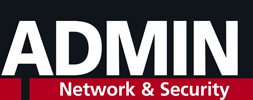
Photo by Beth Macdonald on Unsplash
Bare metal lifecycle management with six open source tools
Tin Boxes
Installing a batch of new machines is easier said than done: It takes quite a while until all the new boxes are installed in a rack and properly wired up. Add to this the tedious task of installing an operating system on the new servers, and your on-site time increases significantly.
In many places, organizations have switched to having the systems transported to the office first, where they are installed before wending their way to the data center. However, this often logistical challenge causes considerable delays in the process. Once the server is installed on site, reinstalling it in the office is no longer an option. You either have to make your way back to the data center or cobble together an ad hoc installation environment based on Preboot Execution Environment (PXE) boot, Dynamic Host Configuration Protocol (DHCP), and Trivial File Transfer Protocol (TFTP) – assuming the network configuration allows you to do so.
Organizations that deal with large numbers of servers instead need a largely automated approach where pressing the power button after installing a machine in the rack is all it takes to start the initial software installation. Many commercial tools are available that can achieve this automation, including Dell's Bare Metal Orchestrator and HPE GreenLake.
Unsurprisingly, the major server manufacturers have these tools in their portfolios, but if you are looking for an open source alternative under a free license, the options quickly dry up, especially for organizations that do not want to be dependent on a commercial provider for long-term server lifecycle management. For this reason, I look at popular tools from the open source community that can be used to manage servers comprehensively at the hardware level.
Foreman, the Eternal Classic
Anyone who has spent a few years in the Linux world will inevitably have heard of Foreman
...Buy this article as PDF
(incl. VAT)
Buy ADMIN Magazine
Subscribe to our ADMIN Newsletters
Subscribe to our Linux Newsletters
Find Linux and Open Source Jobs
Most Popular
Support Our Work
ADMIN content is made possible with support from readers like you. Please consider contributing when you've found an article to be beneficial.







